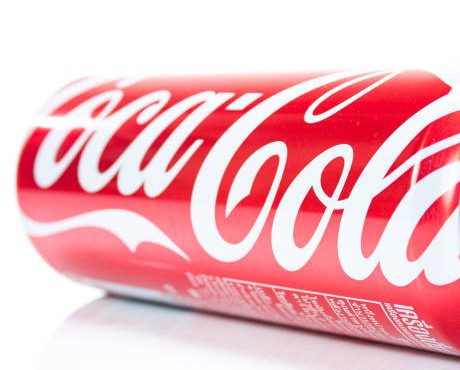Coca-Cola Stock: Long-Term Value Still Unchallenged
Drinking The Coca-Cola Company’s (NYSE:KO) fizzy and sugary drinks makes the world’s most genius income investor, Warren Buffett, happy.
Buffett isn’t only satisfied by consuming sweet Coca-Cola beverages; his Berkshire Hathaway Inc. (NYSE:BRK.A) is the largest shareholder of Coca-Cola stock, owning 400 million shares of the company, worth around $18.1 billion by the end of second-quarter. (Source: “Buffett defends Berkshire’s big Coke stake,” CNBC, May 2, 2016.)
But should Buffet’s belief in KO stock and its regular dividend payments make income investors complacent when Coca-Cola has been facing challenges by the increasing number of health-conscious consumers quitting sugary drinks?
Consumers’ shift away from sugary beverages is now a well-established trend. And this challenge to soda producers isn’t going away any time soon, as the population of the developed world continues to adopt more healthy choices in their daily diet.
Per-capita soda consumption of soda drinks in the U.S. dropped to a three-decade low last year, according to data from trade publication Beverage Digest. This was the 11th straight yearly decline. (Source: “U.S. Soda Consumption Falls to 30-Year Low: Chart,” Bloomberg, March 29, 2016.)
The falling soda consumption isn’t the only threat which Coca-Cola is facing in the U.S. California became the first city in the U.S. last year to introduce the penny-per-ounce tax on soda and sugary drinks, followed by Philadelphia, which June imposed a $0.015-per-ounce tax on sweetened drinks. San Francisco and Oakland are expected to vote in November to consider imposing similar levies. (Source: “Soda Consumption Falls After Special Tax in California City,” The Wall Street Journal, August 23, 2016.)
KO Stock: Coca-Cola Gaining Share in Still Beverage Market
So where is the growth for the world’s biggest producer of soft drinks going to come from when consumers in Coca-Cola’s biggest markets are turning away from its core product lines? The answer to this question may lie in Coca-Cola’s strategy to increase its market share in “still” (non-carbonated) beverages.
While sales of soda beverage sales decline over the past decade, Coca-Cola is pushing to increase its volume in still beverages. The share of this segment surged to 30% of Coca-Cola volume sales, up from 10% in 2000.
Coca-Cola is planning to enter the ready-to-drink tea lattes and coffees market by the first quarter of 2017 to tap into this fast-growing segment of soft drinks where growth has been very strong over the past five years. (Source: “Gold Peak® to Launch Ready-to-Drink Tea Lattes and Cold Brew Coffees in 2017,” The Coca-Cola Company, September 1, 2016.)
“In our portfolio of billion-dollar brands, more than two-thirds are now still beverages such as juices, waters, coffees and teas. In fact, we are the world’s No. 1 still beverage company,” the company’s chief operating officer, James Quincey said in an earnings call in July. (Source: “Coke’s Quincey on Q2 Earnings: The ‘Engine of our Future is Healthy and Growing,,” The Coca-Cola Company, July 26, 2016.)
Another part of Coke’s strategy to produce enough cash for investors in KO stock is to focus on selling smaller packages instead of large-volume items.
Bottom Line on KO Stock
Numbers tell this approach is paying off. Coca-Cola’s North American business reported a four-percent organic revenue growth in the second quarter in this segment and its 25th consecutive quarter of value share gains in the industry. (Source: Ibid.)
It seems long-term investors in Coca-Cola stock are reaping the benefits of company’s solid game plan amid changing consumer preferences. If you take away the daily and monthly market noise from KO stock performance, you’ll see that the company has consistently provided capital gains and dividend to its investors.
Coca-Cola has paid quarterly dividends since 1920 and has increased dividends in each of the last 54 years. This year, it approved annual dividend of $1.40 per share, up from $1.32 per share in 2015 with an annual yield of 3.2%. (Source: “The Board of Directors of The Coca-Cola Company Elects Officers, Declares Quarterly Dividend,” Business Wire, April 28, 2016.)
And when Buffett says he’s, “about one-quarter Coca-Cola,” after consuming 700 calories of soda a day, investors should feel reassured that Coke’s biggest fan is still long on KO stock and he doesn’t see any threat to Coca-Cola’s ability to paying dividends despite a challenging business environment. (Source: CNBC, May 2, 2016, op cit.)
